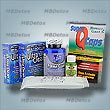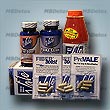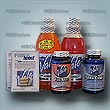-
October 7th, 2010
Testing Of A New Drug
Related products:
-

Complete Critical Cleaning Package
In today’s job market, drug testing can be a mysterious intrusion. Pre-employment drug screens and random …
Buy now
$141.99 -

2 Month Extensive Cleansing Program (Extra Strong)
The Two Month Extra Strong Extensive Cleansing Program provides gradual permanent cleaning with two daily …
Buy now
$109.99 -

2 Month Extensive Cleansing Program (Regular)
The Two Month Extensive Cleansing Program provides gradual permanent cleaning with two daily supplements …
Buy now
$99.99
Testing New Drugs
The term drug is a generic one and includes medicines as well as narcotics. Therefore the term should not be confused as meaning narcotics only. The frontiers of medical science, or for that reason any branch of science, can advance only through the tedious process of trial and error. Testing of New drugs is one such trial and error process. The most common reason for testing of new drugs is to find if they are capable of treating various diseases. Alternatively their ability to act as a vaccine is also tested.
In the first step the effects of the drugs on cell growing in tissue culture and on laboratory animals like rats and mice is noted. If the effect is satisfactory, then the researcher applies for an investigational new drug (IND) application from the US Food and Drug Administration. The grant of the IND permits the trials of the new drug on humans.
The second step is the human trials and in conducted in three phases. In the first phase a group of 20 to 100 healthy volunteers is given the drug to check if it is safe and also to check the speed at which it is absorbed, metabolized and excreted. If the results fall within the accepted range of observations the next phase begins.
In this second phase several hundred volunteer patients are administered the drug to check how effectively it deals with the symptoms. The possible side effects, if any, and the quantity of the dose giving optimum results is also noted. In phase three thousands of patients are give the drug. Data is systematically collected regarding the safety, effectiveness, side effects and optimum quantity of the dose. If this round is successful i.e. if the results compare favorably with those obtained from other drugs, then the manufacturer again applies for a new drug application (NDA) from the Food and Drug Administration. When this is granted the manufacturer is able to choose a new name for the drug.
The fourth phase is a kind of a feedback phase called as post marketing surveillance. Even when the drug is available for sale, on prescription or otherwise, the effectiveness and side effects are noted.
-
Need to pass a drug test ? That's the best website
Face your Drug Test with Confidence
24/7 toll free call line (866) 600-0032
Did not find the information you need? Search the similar articles: